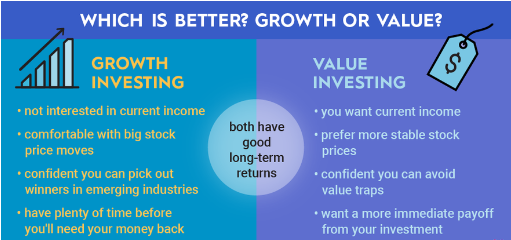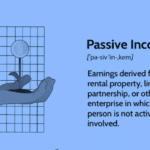Value Investing vs. Growth Investing: Which Strategy Works Best?
Investing in the stock market offers various strategies, but two of the most popular are value investing and growth investing. Each approach has its advantages and disadvantages, making it suitable for different types of investors. But which strategy works best? Let’s dive into the details.
What Is Value Investing?
Value investing focuses on buying stocks that are undervalued compared to their intrinsic worth. Value investors look for companies with strong fundamentals but are temporarily priced lower due to market fluctuations or short-term issues.
Key Characteristics of Value Investing:
✔ Undervalued Stocks: Stocks trading below their intrinsic value.
✔ Low Price-to-Earnings (P/E) Ratios: Indicating the stock might be cheap compared to its earnings.
✔ Strong Financials: Companies with solid balance sheets, high cash flows, and low debt.
✔ Long-Term Focus: Holding investments for extended periods until the market recognizes their true value.
Famous Value Investors:
-
Warren Buffett – Known for buying undervalued businesses and holding them for decades.
-
Benjamin Graham – The father of value investing, author of The Intelligent Investor.
Pros & Cons of Value Investing
| Pros | Cons |
|---|---|
| Lower risk (buying undervalued stocks provides a margin of safety). | Stocks can remain undervalued for long periods. |
| Historically strong long-term performance. | Requires patience and discipline. |
| Less volatility compared to growth stocks. | Some undervalued stocks may never recover (“value traps”). |
What Is Growth Investing?
Growth investing focuses on companies that are expected to grow at a faster rate than the overall market. These companies reinvest profits into expansion instead of paying dividends.
Key Characteristics of Growth Investing:
✔ High Revenue & Earnings Growth: Companies with consistent and rapid growth in sales and profits.
✔ High P/E Ratios: Investors are willing to pay a premium for future growth potential.
✔ Disruptive & Innovative Industries: Tech stocks, biotech firms, and high-growth sectors are common targets.
✔ Reinvestment Over Dividends: Growth companies reinvest profits into expansion rather than paying dividends.
Famous Growth Investors:
-
Peter Lynch – Famous for investing in high-growth stocks at Fidelity’s Magellan Fund.
-
Cathie Wood – CEO of ARK Invest, focused on innovative, high-growth companies.
Pros & Cons of Growth Investing
| Pros | Cons |
|---|---|
| High potential for significant returns. | Higher volatility (sharp price swings). |
| Investing in innovative companies with future potential. | Expensive valuations (high P/E ratios). |
| Outperforms in bullish markets. | Riskier during economic downturns or interest rate hikes. |
Value vs. Growth: Which Strategy Works Best?
There is no single answer, as each strategy performs better in different market conditions.
When Value Investing Works Best
✔ During market downturns and recessions.
✔ When interest rates are rising (investors favor stable, cash-flow-positive companies).
✔ For long-term investors looking for steady, predictable returns.
When Growth Investing Works Best
✔ During bull markets when investors are optimistic.
✔ When interest rates are low (companies can borrow cheaply to fund expansion).
✔ For investors willing to take higher risks for bigger rewards.
The Best Approach: A Blend of Both?
Many successful investors use a combination of both strategies. A balanced portfolio might include value stocks for stability and growth stocks for high potential returns. This helps diversify risk and take advantage of opportunities in different market cycles.
Final Thoughts
Both value and growth investing have their strengths and weaknesses. The best strategy depends on:
✅ Your risk tolerance – Growth stocks are riskier, while value stocks offer stability.
✅ Your investment timeline – Growth stocks work well for long-term high returns, while value stocks offer steady gains.
✅ Market conditions – Different strategies perform better in different economic climates.
In the end, the best investment strategy is the one that aligns with your financial goals and risk appetite. Whether you prefer value, growth, or a mix of both, staying informed and disciplined is key to long-term success.




